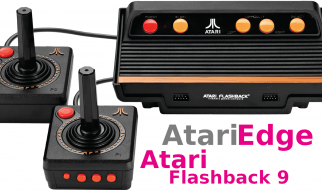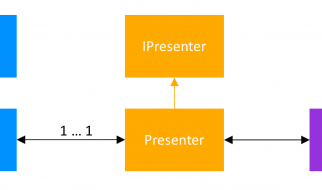Lush landscaping filled with fragrant flowers and thick green grass does not happen by accident. It takes skill, hard work and the right equipment. Skills can be learned, hard work can be done by anyone, so let?s talk about the equipment you need. An essential piece of equipment is a tow behind yard sprayer. Anyone with a larger property to maintain can drastically cut down on the amount of manual labor required to keep their property looking good by utilizing one. Finding the right one requires careful consideration though. Let us show you the best pull behind lawn sprayers to narrow down the wide selection.

How Can a Pull Behind Garden Sprayer Help You?
If you have a large property with extensive landscaping, all of your grasses and plants need to be protected from weather, weeds and insects. A sprayer can simplify the task of watering and applying pesticides or weed killers. You simply attach the tow sprayer to your sit-down mower or four-wheeler and take care of your plants with ease. They come in a variety of sizes, from small sprayers to big workhorse pull behind sprayers.
What to Look for in a Tow Behind Sprayer
Boom vs Boomless Sprayer
The first thing you want to consider is whether you want a boom sprayer or boomless sprayer. They are meant for different kinds of spraying. A boomless sprayer is far better suited for uneven terrain, orchards, or for around objects in the yard. The best boom sprayers are more suited for field spraying. Using a yard sprayer with boom does give you more even coverage and it is better in windy conditions, but boomless spraying works for more diversified terrain and plants.
When it comes to buying a towable weed sprayer, there are a few things you need to consider. Below, we cover these components:
The Tank
There are two things to be concerned about with the tank. What is it made from and how much liquid it can hold?
Tank Capacity: The capacity of the tank can range from a smaller 13 gallon tank to a 200 gallon tank. For most residential properties, you will be fine with a 15 gallon tank. Larger tanks, like 100 gallon pull behind sprayers, are meant for commercial or industrial use.
Tank Material: When it comes to the material of your tank, what it is made from is extremely important. If you plan to use your sprayer for pesticides or any type of weed killer then you need materials that won?t react with the chemicals in the solution. Most tanks are made from polyethylene, fiberglass or stainless steel. Polyethylene is the most common as it is cheaper to manufacture, but if left out in direct sunlight it can be damaged. Fiberglass is more durable than polyethylene, is lightweight and it won?t rust, but it does not tolerate cold. Stainless steel is the best option as far as durability, but it will be heavier and more expensive.
Pressure
The pressure of your sprayer is measured in PSI (pounds per square inch). The pressure indicates how well your sprayer is working. If you do not have enough pressure, you will not get the water or pesticides to go where you need them to go. You want a sprayer with a 70 PSI or higher to get adequate coverage.
Spray Width
The spray width is the amount of area you are covering as you spray. The wider the spray width, the faster you can spray your property. Most come with adjustable nozzles so you can narrow or widen the spray width.
Different Types of Spray Nozzles
There are several different types of lawn sprayer boom nozzles on the market and you want the right style to ensure you get adequate coverage when you?re spraying. Below, you will find the different types of agricultural spray nozzles and the chemicals they work best with. The chemical that you are using will tell you the nozzle that works best with their product, but here is a general guide.
Best spray nozzles for fungicides: For fungicides, you want a hollow cone nozzle with the pressure between 40?100 PSI. The size of the droplets will be smaller, but you get better penetration.
Best spray nozzles for glyphosate: Glyphosate works best when it is sprayed in smaller droplet sizes, and for that you should use a flat fan nozzle.
Best spray nozzles for insecticides: Check first with the manufacturer of your insecticide to see what nozzle they recommend for best coverage, but most insecticides will use a hollow cone nozzle.
Best spray nozzles for herbicides: To spray herbicides you can use the regular flat fan nozzle to give you complete coverage.
Best spray nozzles for Dicamba: When spraying Dicamba, you want to have a nozzle that will give you larger droplets. As recommended by the manufacturer, flood type nozzles work best.
Hitch
The hitch is how you connect your ATV tow behind sprayer. Most units have a universal hitch that will work with any lawn tractor sprayer, but double check to make sure.
Tires
You won?t be towing your sprayer over smooth paved road, but rather over a variety of terrain. Thus, you will need good tires. Pneumatic tires will give you better stability and they are easier to tow, but they are more likely to puncture, so you might want to look into no-flat tires.
How to Calibrate a Sprayer that has Booms
If you want to get the most coverage from your tow-behind trailer boom broadcast and spot sprayer, then you need to make sure that it is calibrated correctly. Here are the steps that you need to take to calibrate your sprayer.
1. Fill your sprayer half full with just water and run it for a few minutes to make sure there are no leaks and everything is working properly.
2. Measure the distance in inches between the nozzles. That will help you calculate the travel distance on your property. The appropriate distances for different nozzle spacing is as follows: 408 ft for a 10-inch spacing, 272 ft for a 15-inch spacing, 204 ft for 20-inch spacing, 136 feet for a 30-inch spacing, and 102 feet for a 40-inch spacing.
3. Drive around your property at the same speed that you would to spray and measure how long it takes. You may want to do this more than once and take the average time.
4. Leave your sprayer parked, but run the sprayer for the same amount of time it took you to drive around your property. Catch the liquid from each nozzle in a jar.
5. Find out the average output of your nozzles. That output in ounces will be equal to application rate in gallons per acre.
6. Compare the rate you got in step 5 against the application rate recommended by the herbicide/pesticide manufacturer. If you?re within 5%, then you are fine. If is too high, then decrease the spray pressure. If it is too low, then increase the spray pressure. You need to be mindful to stay within the safety conditions of the sprayer.
Keep testing and adjusting until you are within 5% of the application rate.
Our Picks
Our Pick for Best Overall: Northstar Tow-Behind Trailer Boom Broadcast and Spot Sprayer
Specs:
Tank Size: 21 gallons
Pressure: 70 PSI
Dimensions: 48 x 42 x 25
Spray Pattern: Cone, stream
This Northstar tow-behind sprayer comes with a 21 gallon tank that is UV resistant and has thicker walls to protect against corrosive chemicals. The tank is marked so that you always know exactly how much liquid you have left in the tank. It has foldable boom arms, a removable axle, and wheels making it easy to store when you are not using it.
It comes with an 12V NSQ on demand pump that will provide you with 2.2 gallons per minute of open flow. The pump is easy to prime and has a pressure of 70 PSI. It does not need to cool down, so you can keep spraying as long as necessary. It can be attached to any type of riding lawn mower or ATV and is the perfect choice for residential lawns and gardens.
Our Pick for Best Value: Ironton Tow-Behind Sprayer
Specs:
Tank Size: 13 gallons
Pressure: 70 PSI
Dimensions: 40 x 21.5 x 21.5
Spray Pattern: Cone, stream
This is a lightweight and compact unit that is perfect for any yard. It is the best pull behind sprayer for zero turn lawn mowers. It comes with an adjustable spray nozzle that can go from cone to stream sprays, and can reach up to 12 feet vertically and 20 feet horizontally, ensuring coverage all over your property. The Ironton Pump can spray up to a gallon per minute, allowing you to spray weeds or trees, if need be. It is not as expensive as some of the other models, but the drawback is that it does not tolerate cold or heat as well, so you will have to make sure it is properly stored.
Our Pick for Best Pull Behind Water Tank: John Deere Tow Behind Sprayer
Specs:
Tank Size: 45 gallons
Pressure: 100 PSI
Dimensions: 20 x 20 x 40 inches
Spray Pattern: Cone, stream
John Deere has been setting the standard in agricultural equipment for nearly 100 years, so you know you are buying quality if you pick this up. This is one of the best boom sprayers on the market and you can use it to apply anything from tree spray to weed killer to plain old water. With the wide 90 inch folding spray boom, it is the ideal pull behind lawn sprayer for 2 acres or more. You can use the boom to spray in three different patterns for a more precise spray swath. There is also a spray wand for the times you need to handle flowers, shrubs or trees. Built with a heavy duty frame and accompanied by 15×6 tires, you can use it on any terrain.
Conclusion
Here are our selections for the best pull behind sprayers for lawn tractors:
- Our Pick for Best Overall: Northstar Tow-Behind Trailer Boom Broadcast and Spot Sprayer
2. Our Pick for Best Value: Ironton Tow-Behind Sprayer
3. Our Pick for Best Pull Behind Water Tank: John Deere Tow Behind Sprayer
Hopefully after reading our pull behind sprayer reviews you are in a better position to choose the right one for your needs. Any of these sprayers are up to the task.
The Review Guys is part of the Amazon Services LLC Associates Program, which is an affiliate program made to help monetize websites by compensating them for products purchased via affiliate links referring to Amazon.


